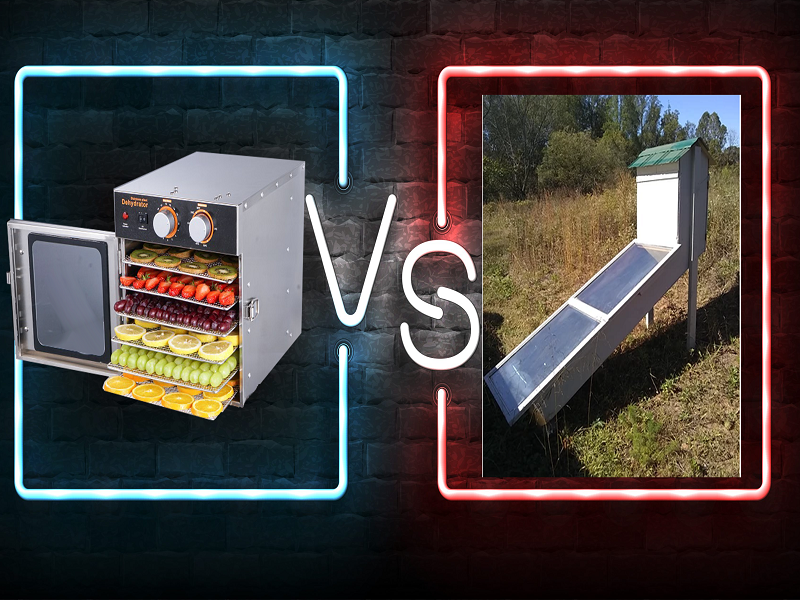Dehydrating food by placing it in the open air on a sunny day without any protection from insects, birds, and animals, is a practice that goes back millennia, but for health reasons, it is no longer recommended for food dehydration especially for jerky making.
While we know that the ancient Egyptians sun-dried food, what we don’t know is how many people may have been affected by food-borne illnesses owing to possible low hygiene standards at the time.
Solar drying as it is practiced nowadays usually involves devices that are built to protect the food from pests, and to improve the efficiency of dehydration by concentrating the flow of hot air over the food drying area.
With the development of electrical reticulation systems in the early twentieth century came to the possibility of electrically operated dehydrators that were not weather-dependent, and could run continuously day and night.
Some people such as those in more remote areas where mains electricity is not available to use solar dehydrators out of necessity, but a number of people use this method out of choice.
Electric dehydrators are more expensive than solar dehydrators owing to the materials used and the cost of the electrical circuits, which may have relatively simple analog controls or more complex and versatile programmable digital controls.
Dehydration times are substantially reduced when compared to solar dehydration, owing to the continuous nature of the drying process, and are proportional to the power rating of the fan-heater unit and the volume of airflow.
Although the initial cost of an electric dehydrator may be quite high, it runs at low temperatures, uses less power and is more energy-efficient than an oven making it a better choice for the money.
Obviously, solar dehydrators only work during daylight hours and are dependent on sunny weather.
Solar dryers can be purchased or constructed at home at a relatively low cost, and designs vary in efficiency and complexity.
They need to be made of durable materials, such as hardwood or as they will be exposed to the elements on a long-term basis.
Post time: Jun-29-2022


